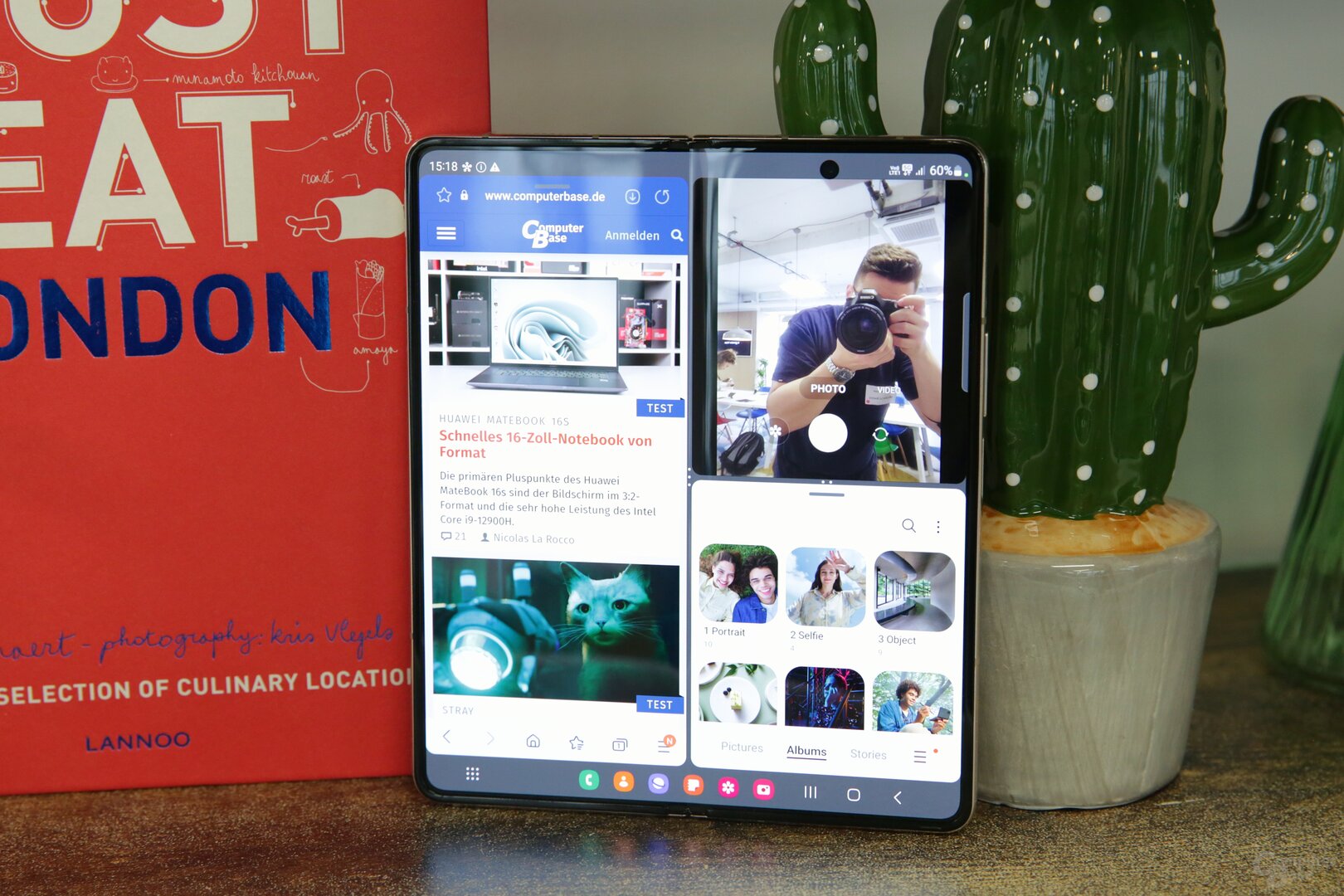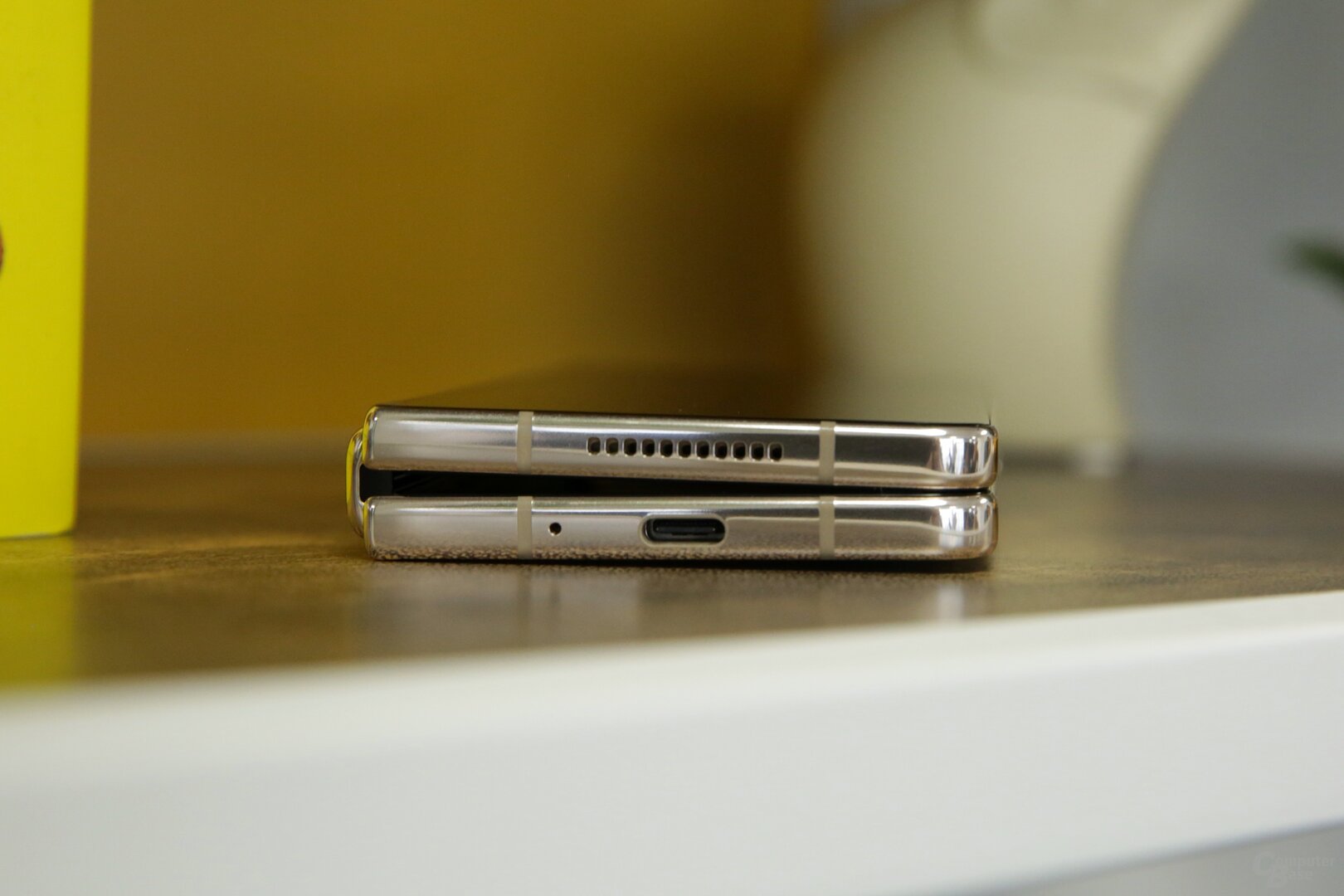The next generation of flash memory for smartphones is called UFS 4.0. Now JEDEC has published the new standard. The new memory modules have an interface that is twice as fast and achieve 4.2 GB/s. The Samsung Galaxy Z Fold 4 is a first customer.
As the NAND Flash market leader, smartphone manufacturer and JEDEC member, Samsung already started promoting the new generation of Universal Flash Storage (UFS) in May, which combines the controller and NAND Flash in a compact chip housing.
UFS 4.0 with up to 5.8 GB/s (gross)
The UFS standard uses the so-called M-PHY interface in combination with the UniPro protocol, both created by the MIPI Alliance. With the UFS 1.0 specification published in 2011, the maximum theoretical data rate was still 2.9 gigabits per second (362.5 MB/s). In 2013, UFS 2.0 followed, with HS Gear3 mode doubling it to 5.8 Gbit/s (725 MB/s). With UFS 3.0 there was a change to HS-Gear4, which brought about a renewed doubling to 11.6 Gbit/s (1,450 MB/s) per data line, which also applies to UFS 3.1.
With UFS 4.0 based on M-PHY 5.0 and UniPro 2.0, the throughput is doubled again: 23.2 Gbit/s or 2,900 MB/s are transmitted per line. As with the predecessor, two lines can also be used, the maximum data throughput increases to 46.4 Gbit/s or 5,800 MB/s. However, the user data rate is lower.
Samsungs UFS 4.0 achieves 4.2 GB/s
Samsung's first UFS 4.0 reads data at a maximum of 4,200 MB/s and writes it at up to 2,800 MB/s. The chip, which measures no more than 11 × 13 × 1 mm (L × W × H), contains several dies from Samsung's 7th generation 3D-NAND aka “V-NAND v7” and a controller from Samsung. The storage capacities should reach up to 1 TB.

About two weeks ago, Samsung announced at the Flash Memory Summit 2022 that series production of the UFS 4.0 should begin later this month. The official blessing of the standardization body JEDEC has now been granted.
One of the first customers is the foldable smartphone flagship Samsung Galaxy Z Fold 4 (Hands-On), which has 256 GB up to 1 TB of fast storage.
-
 Samsung Galaxy Z Fold 4 hands-on
Samsung Galaxy Z Fold 4 hands-on
Image 1 of 4



Samsung Galaxy Z Fold 4 hands-on
UFS 4.0 not only brings more performance
In addition to the increased throughput, UFS 4.0 should also Have advantages in terms of energy requirements. JEDEC lists the improvements over the previous standard as follows.
- To achieve the highest performance and most power efficient data transport, JEDEC UFS leverages industry–leading specifications from the MIPI® Alliance to form its Interconnect Layer. This collaboration continues with UFS 4.0, which leverages the M-PHY® version 5.0 specification and the UniPro® version 2.0 specification to double the UFS interface bandwidth and enable up to ~4.2 GB/s for read and write traffic.
< li>Introduced Multi-Circular Queue definition for more demanding storage I/O patterns
- Advanced RMPB interface allows increased bandwidth and protection for secure data
- Utilizes a more efficient VCC=2.5V as opposed to the 3.3V supported in the prior version of the standard
- Improved system latencies by enabling High Speed Link Startup, Out of Order Data Transfer and the BARRIER Command
- Eases system integration by introducing Enhanced Device Error History with host configurable timestamps and M-PHY's Eye Monitor
- Preserves backwards compatibility with UFS 3.1 and 3.0 to allow mixed systems applications
JEDEC

